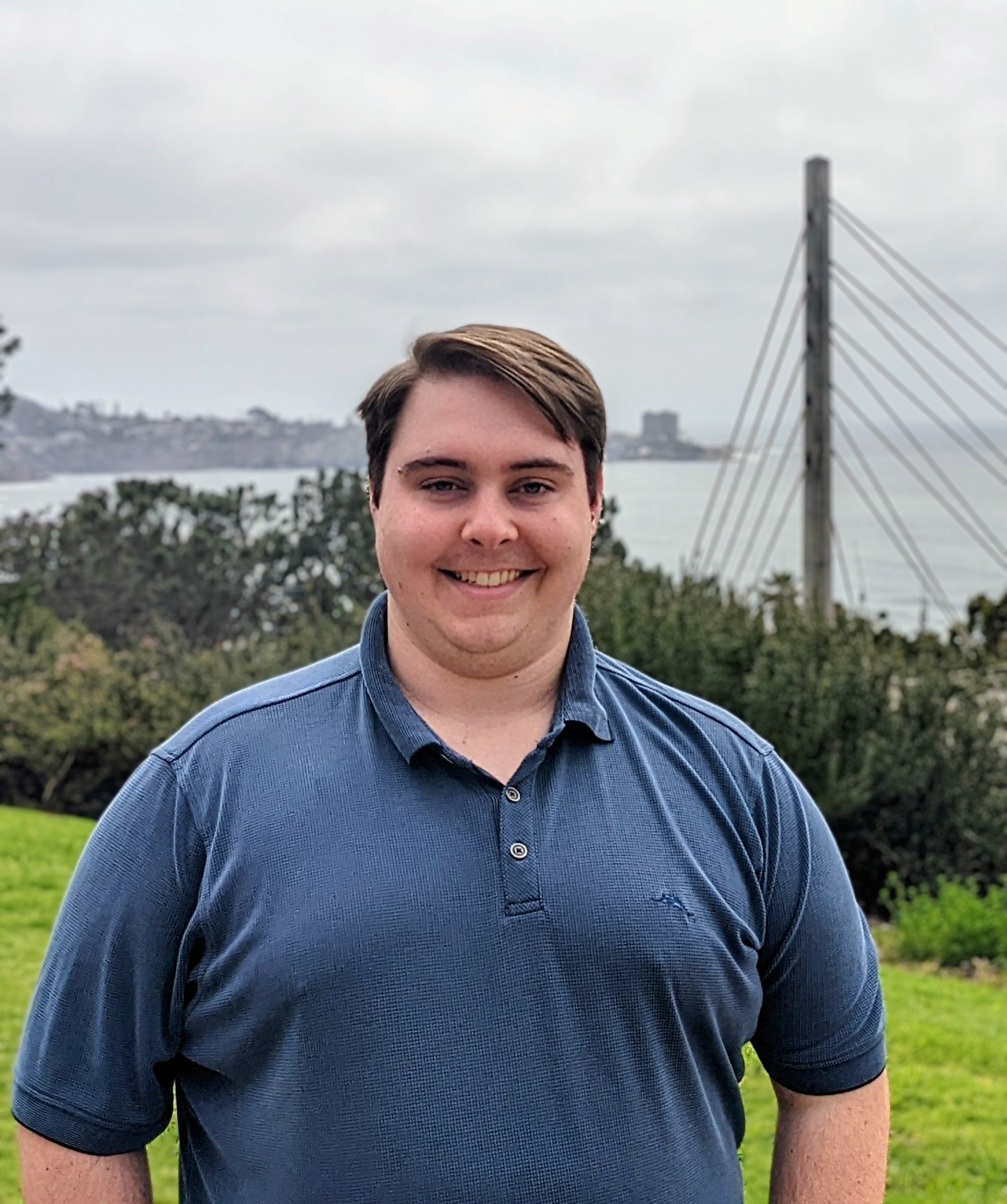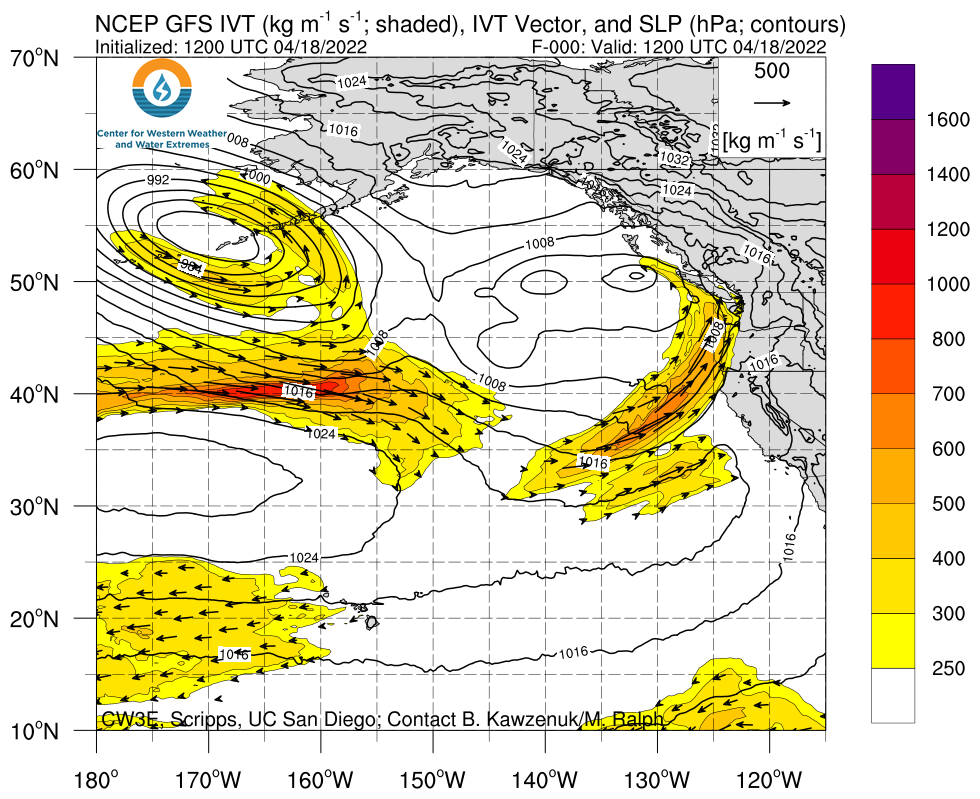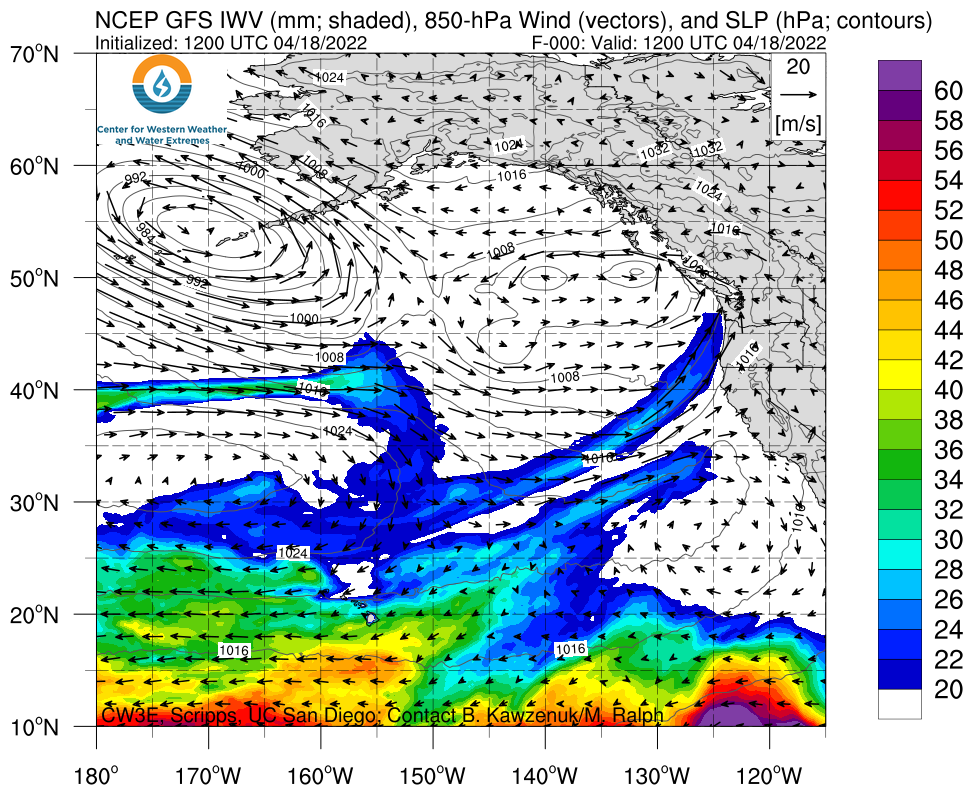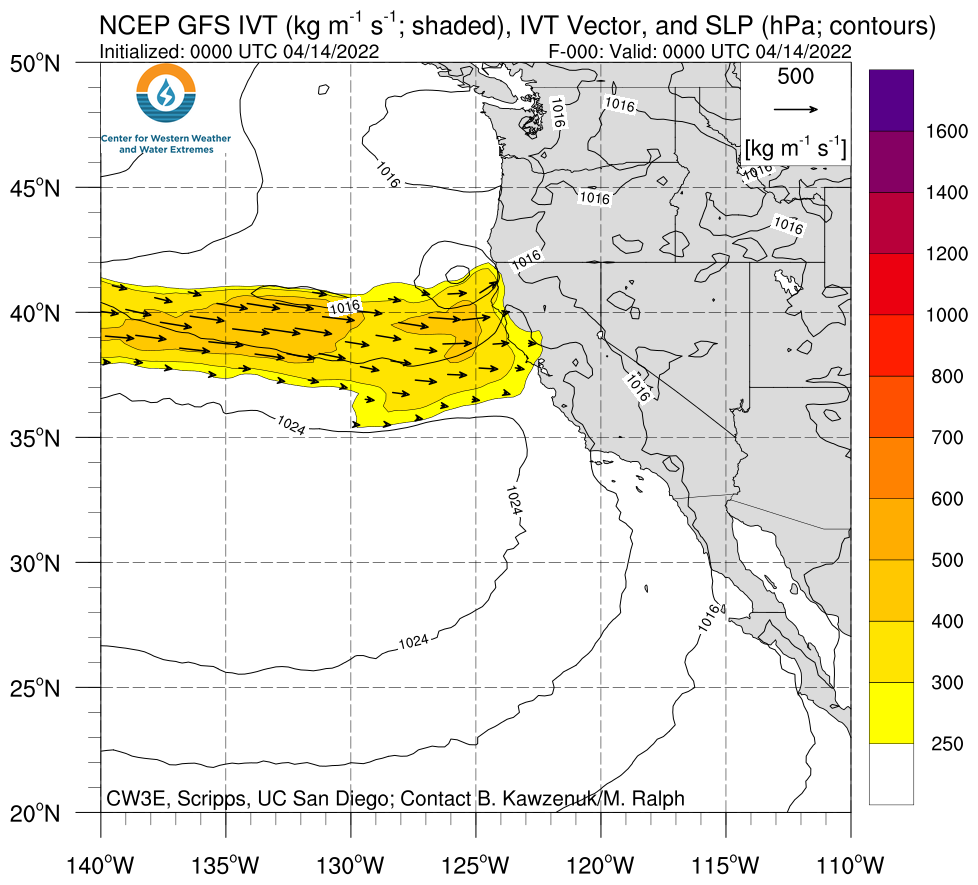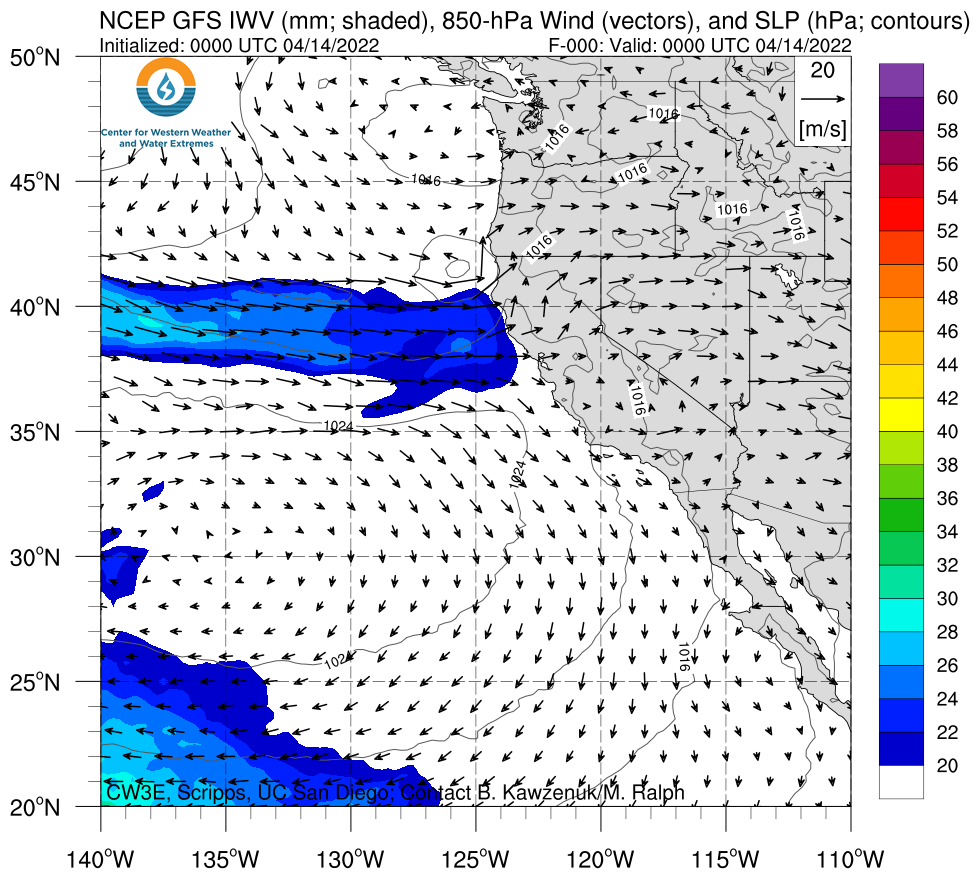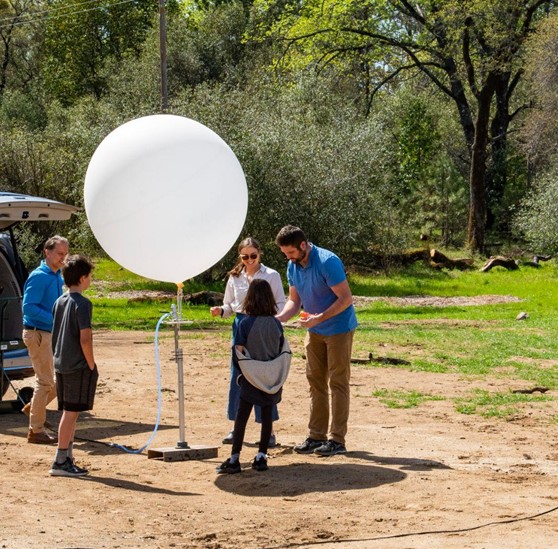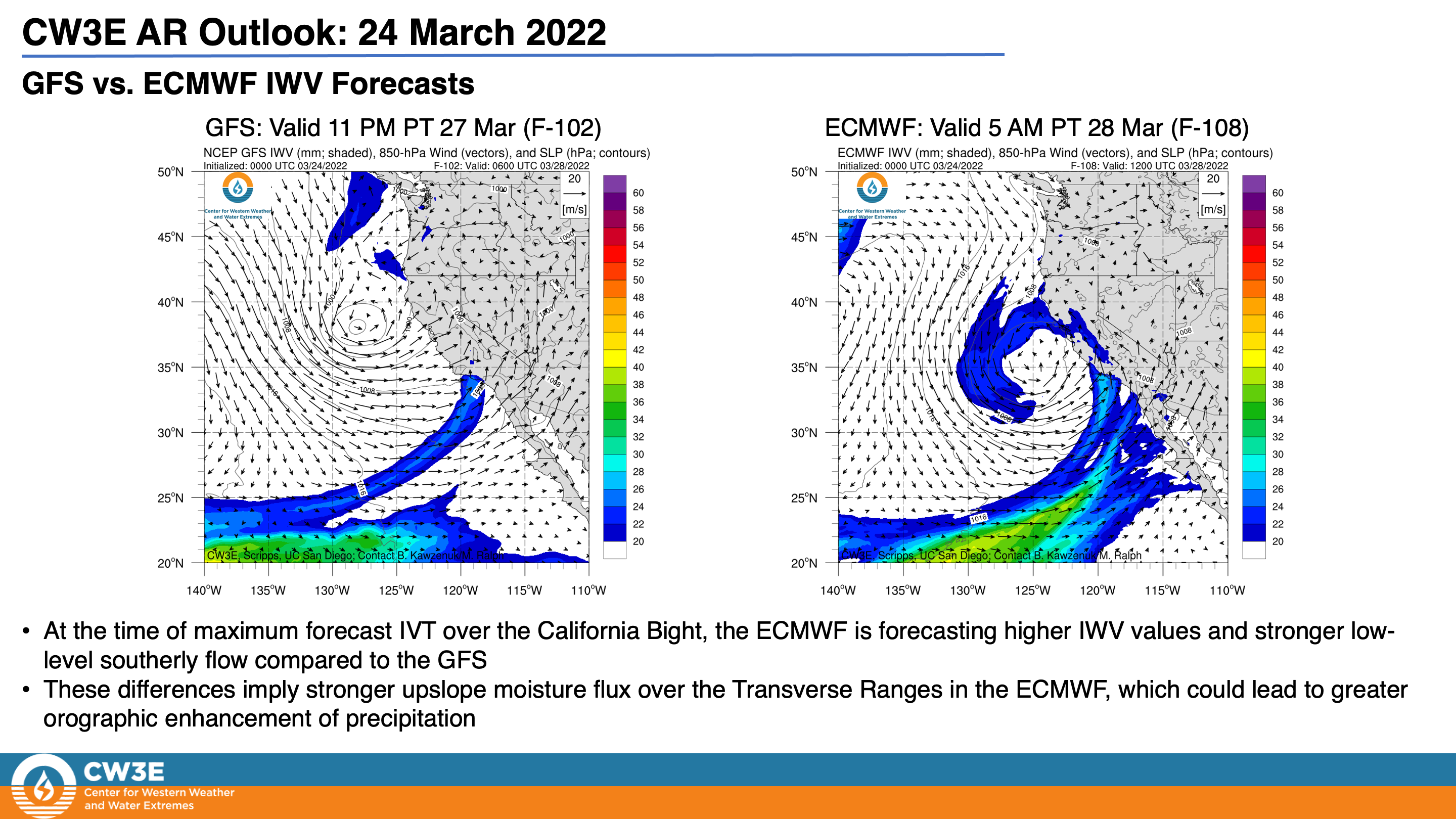CW3E and Groundwork San Diego Host Webster Elementary School Students at Scripps Pier to Learn About ARs and Extreme Weather
April 26, 2022
CW3E PhD candidate Cody Poulsen, and Scripps-GEO scholar Anh Pham Phu, and staff member Benji Downing partnered with Allie Sifrit and Rose Do from Groundwork San Diego- Chollas Creek’s Kids to the Coast program, sponsored by the California Coastal Conservancy, to host an extreme weather educational event for 5th graders from Webster Elementary School. A group of 36 students participated in this event which was hosted at Scripps Institution of Oceanography. The day consisted of two interactive learning opportunities, one was a Groundwork led beachcombing of the shore near Scripps Pier where the students learned about the impacts of extreme weather on changes to the shoreline and marine life. The students then participated in a CW3E led radiosonde launch from the pier to learn about the Center’s role in extreme weather research and some of the key methods of data collection.
Prior to the launch, Downing and Poulsen led a discussion where the students learned about how we observe and model atmospheric rivers and associated extreme precipitation events. They learned about why our research is important for flood risk management and water conservation, and how our research helps society and ecosystems be resilient to extreme weather.
The launch was assisted by Webster Elementary 5th grader VJ. The students counted down from 10 and they released the balloon. The students were excited by the rapid rate of ascent, and amazed to learn that pressure decreases with altitude causing weather balloons to expand up to 4 times the diameter or more before popping.
After the launch Poulsen gave the students a tour of the pier and showed them equipment used by SIO and CW3E for atmospheric and oceanographic research. The day finished with a craft activity led by Sifrit and Do. The students used this opportunity to create an informational pamphlet about extreme weather events that occur in San Diego, such as flooding from atmospheric rivers, severe thunderstorms, extreme droughts, heat waves and severe wind events.

Webster Elementary students gather on Scripps pier to learn about radiosonde launches and the work CW3E does to conduct research on atmospheric rivers and extreme weather events. | 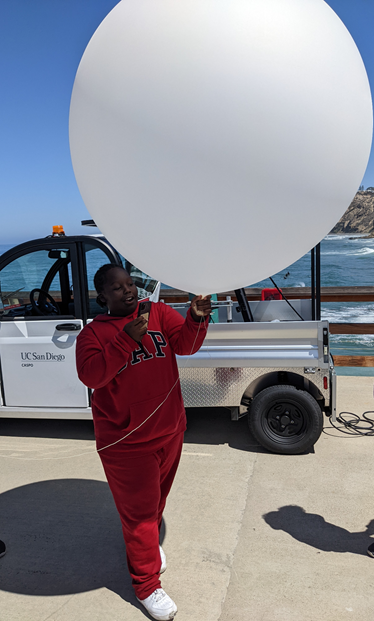
Under the guidance of Downing, Webster Elementary student VJ holds a weather balloon before launch. |

